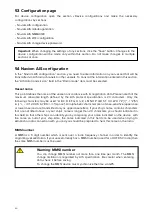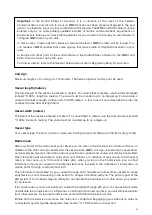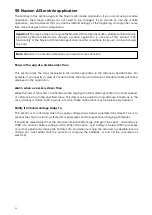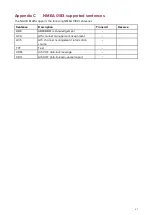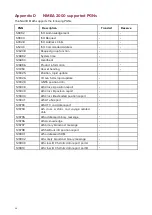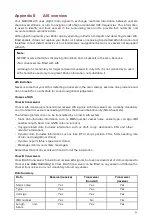
Data
Receiver (receive)
Transceiver
(transmit)
Transceiver
(receive)
Antenna location
Yes
Yes
Yes
Draft
Yes
No
Yes
Cargo
Information
Yes
Yes
Yes
Destination
Yes
No
Yes
ETA
Yes
No
Yes
Time
Yes
Yes
Yes
Ship's position
Yes
Yes
Yes
COG
Yes
Yes
Yes
Data
Receiver (receive)
Transceiver
(transmit)
Transceiver
(receive)
SOG
Yes
Yes
Yes
Gyro heading
Yes
Yes*
Yes
Rate of turn
Yes
No
Yes
Navigational
status
Yes
No
Yes
Safety message
Yes
No
Yes
*Class B transceivers do not transmit a Gyro heading unless the transceiver is receiving an NMEA HDT
sentence from an external source.
Data reporting intervals
AIS information is classed as either static or dynamic. Static information is broadcast, when data has
been amended, or upon request, or by default, every 6 minutes.
The reporting rates for dynamic information depend on speed and course change, and are given in
the following tables.
Class A systems
Ships Dynamic Conditions
Reporting rate
Not changing course
Changing course
At anchor or moored,
moving less than 3 knots
3 Minutes
3 Minutes
At anchor or moored,
moving greater than 3
knots
10 Seconds
10 Seconds
0-14 knots
10 Seconds
3 1/3 Seconds
14-23 knots
6 Seconds
2 Seconds
Faster than 23 knots
2 Seconds
2 Seconds
Note:
The reporting rates shown here are for reference and may not be the rate at which
information is actually received by your AIS transceiver. This is dependent on a number of factors,
including but not limited to antenna height, gain and signal interference.
Summary of Contents for AIS
Page 1: ......





